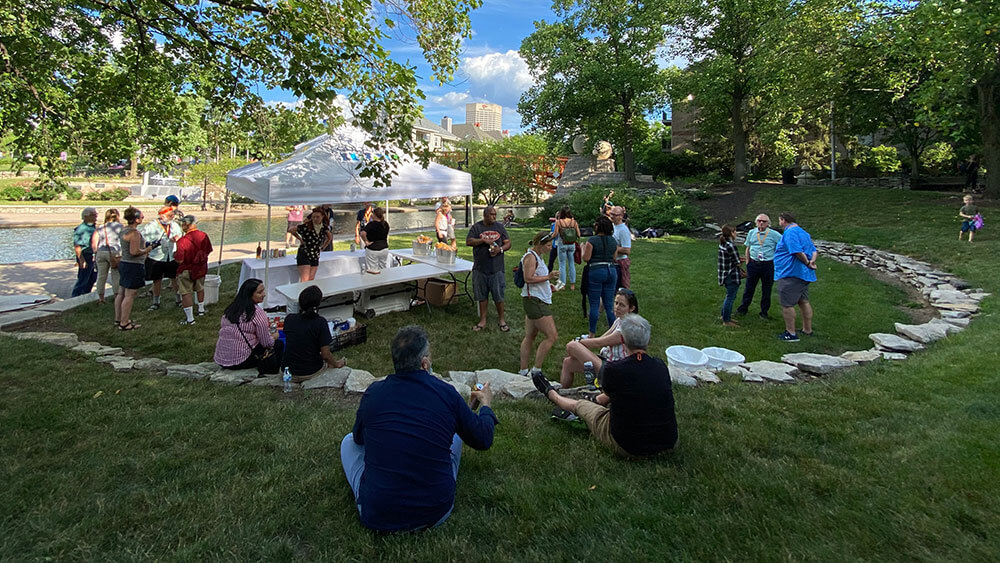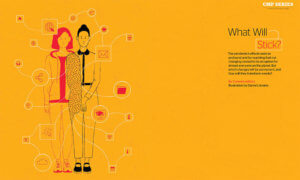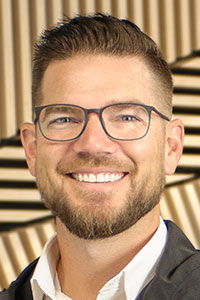
While the Walk/Bike/Places conference will return to an in-person format to take advantage of its host cities, organizers plan to still have virtual components,

Convene asked individuals from inside and outside the business events industry to talk about behaviors and other changes brought on by the pandemic that are lasting, and in particular, to share which ones they think are likely to transform events. We offer their insights and opinions on this page and in the rest of our July-August CMP Series, What Will Stick?
Nate Storring: ‘People suddenly saw the places they take for granted in a new light.’

Nate Storring
While we have always been advocates for the benefits that public spaces offer to our well-being, I think many of us found a new appreciation for what a fundamental piece of social infrastructure parks, plazas, and streets are in our city. When we were cooped up in our homes during the early days of pandemic lockdown, people suddenly saw the places they take for granted in a new light. The places we walk through and run into people, the places our kids play, the places where we access basic needs like food or exercise — they were taken away from us. So, when we were finally able to venture out again, we saw record use of parks and trails and efforts to make more room for public space use, like closing streets to car traffic and moving dining and shopping outdoors.
I hope we don’t go back to “normal” as the pandemic recedes. Unfortunately, as a survey of mayors revealed last year, while the vast majority had implemented new strategies to make public spaces more safe, accessible, and useful to their constituencies, only about 6 percent said they planned to make these changes permanent. The bottom line is that if communities want their leaders to continue to prioritize improving public space, they’re going to have to demand it.
How do you think the experience of the pandemic will change how your conferences will be designed in the future and how attendees will want to participate?
While we have been so grateful for the virtual options available to us during the pandemic, our hybrid Walk/Bike/Places conference this summer reaffirmed to us how important an in-person component is to our mission and audience. Sitting on Zoom for the duration of an entire conference is tiring and lacks the same opportunities to experience a host city and to connect with fellow attendees. That said, while we will likely go back to a more in-person-heavy format, we may consider ways to make a smaller cross-section of general sessions and breakout sessions more widely available virtually, rather than the whole conference. We are also thinking more and more about the environmental impact of air travel, and how we can continue serving an international audience while reducing our footprint.
— Nate Storring is deputy executive director of the Project for Public Spaces.
Michael Lockwood: ‘[Flexible spaces] are a great opportunity to … connect [people] in a more inclusive way.’
Populous, the Kansas City–based architecture firm where Michael Lockwood heads up the convention center practice, has long incorporated flexible meeting spaces in and around the traditional convention center elements of ballroom, meeting room, and exhibit hall, the architect said.

Michael Lockwood
“But the pandemic has accelerated a lot of things that were already on their way in — and has ushered out things that were already becoming antiquated models,” Lockwood said. “It’s amazing how COVID-19 has started to highlight how [flexible spaces] are a great opportunity to spread people out, to connect them in a more inclusive way — on their own terms and where they feel most comfortable.”
Populous has absorbed some of the lessons of the “watch-from-anywhere” meeting from events like C2 Montreal, a creativity-infused business conference which has been held since its founding in 2012 in non-traditional spaces, including a venue established in what was once a 19th-century shipyard. Lockwood and his colleagues took note of how participants consumed content throughout the entire venue — many attended talks in the main auditorium, but also watched on speakers on digital screens while sitting outside over coffee or drinks.
“What we’ve been hearing in our research, and in talking to delegates that attend conferences, is that they don’t want to be inside all day,” Lockwood said. “They want the option to go have a beer with their friends and absorb the content at their own pace.”
Instead of trying to cram everybody into a space, with the attitude of, “’You didn’t make the keynote? I’m sorry, you’ve got to wait outside,’” Lockwood said, event organizers should “embrace everybody. Be more inclusive with your solution. Everyone’s experience will be better for it.”
— Barbara Palmer
